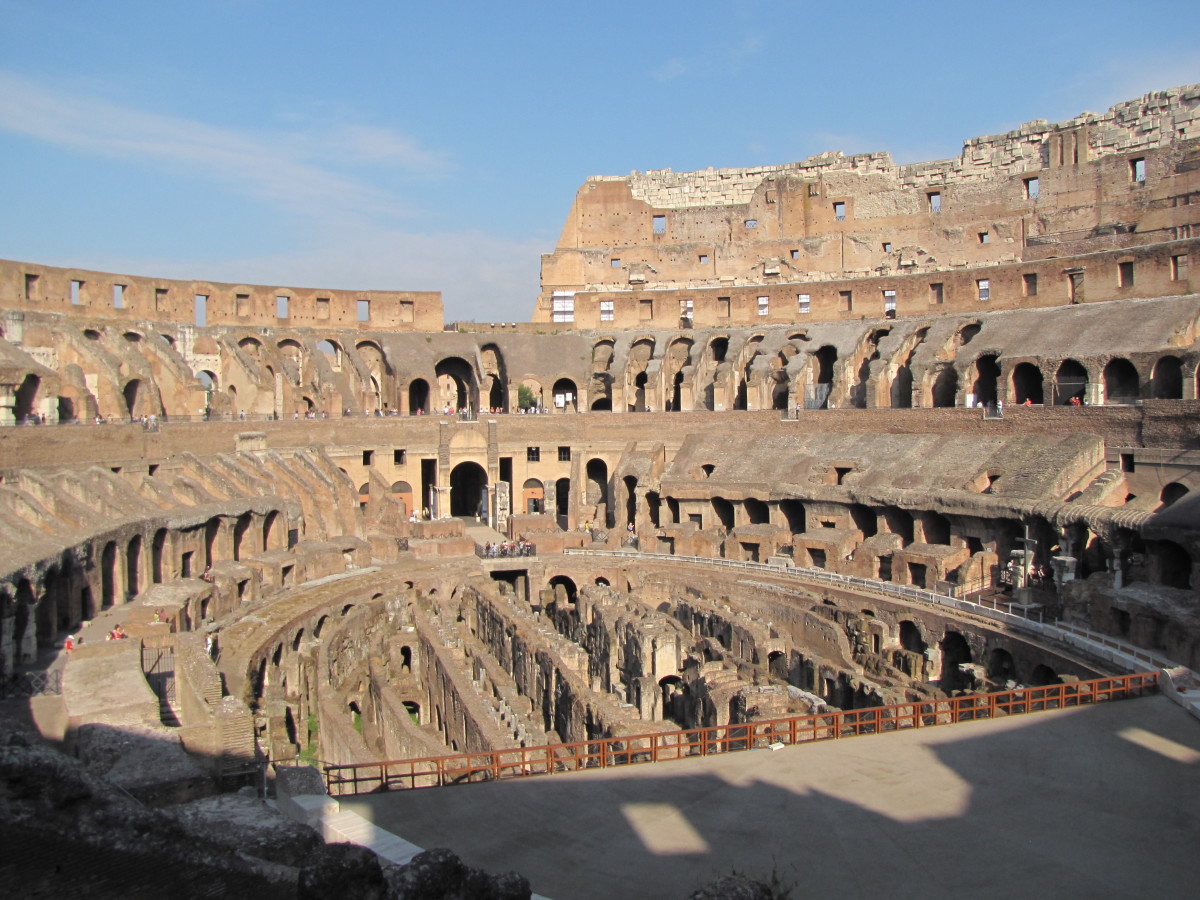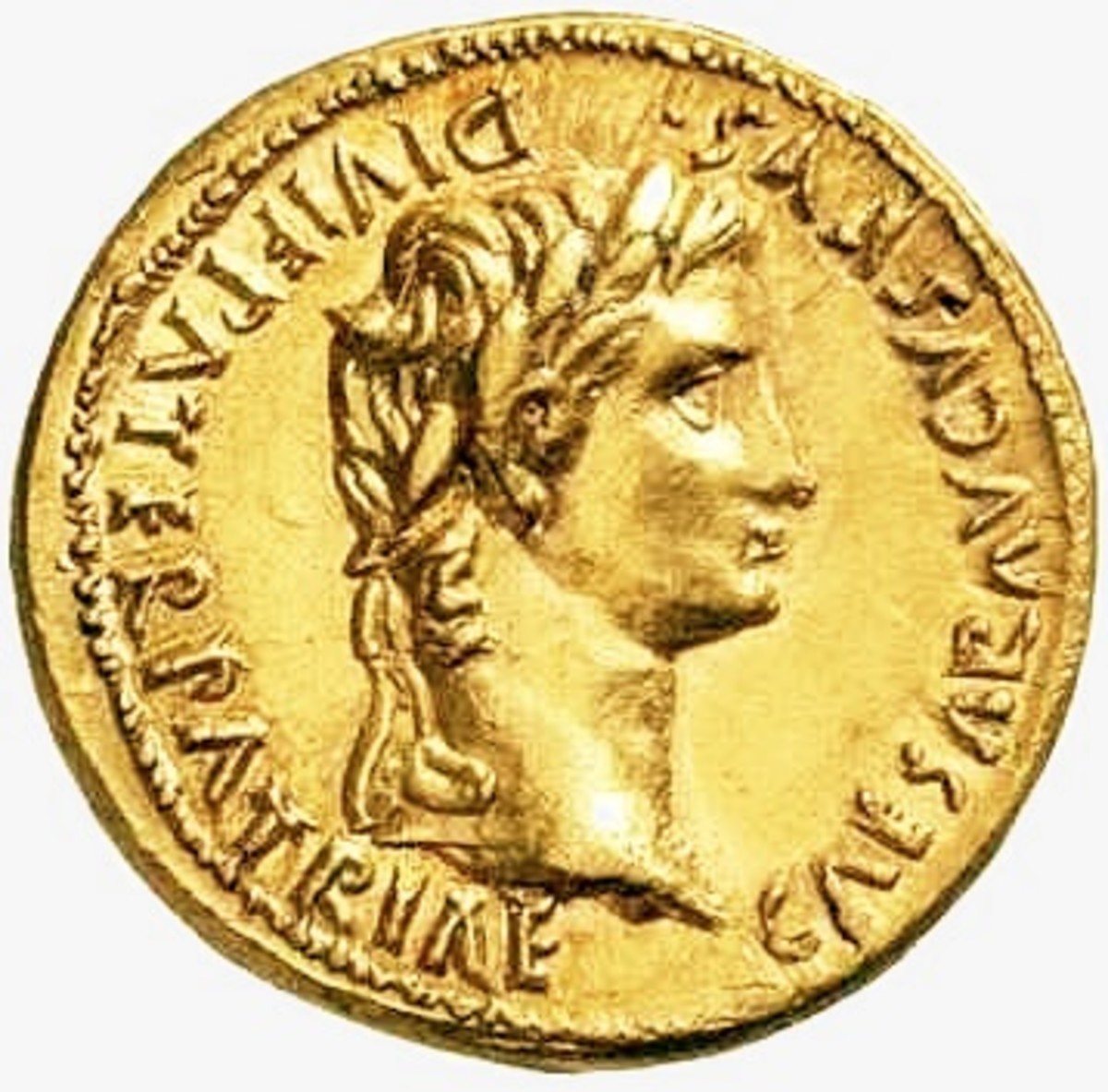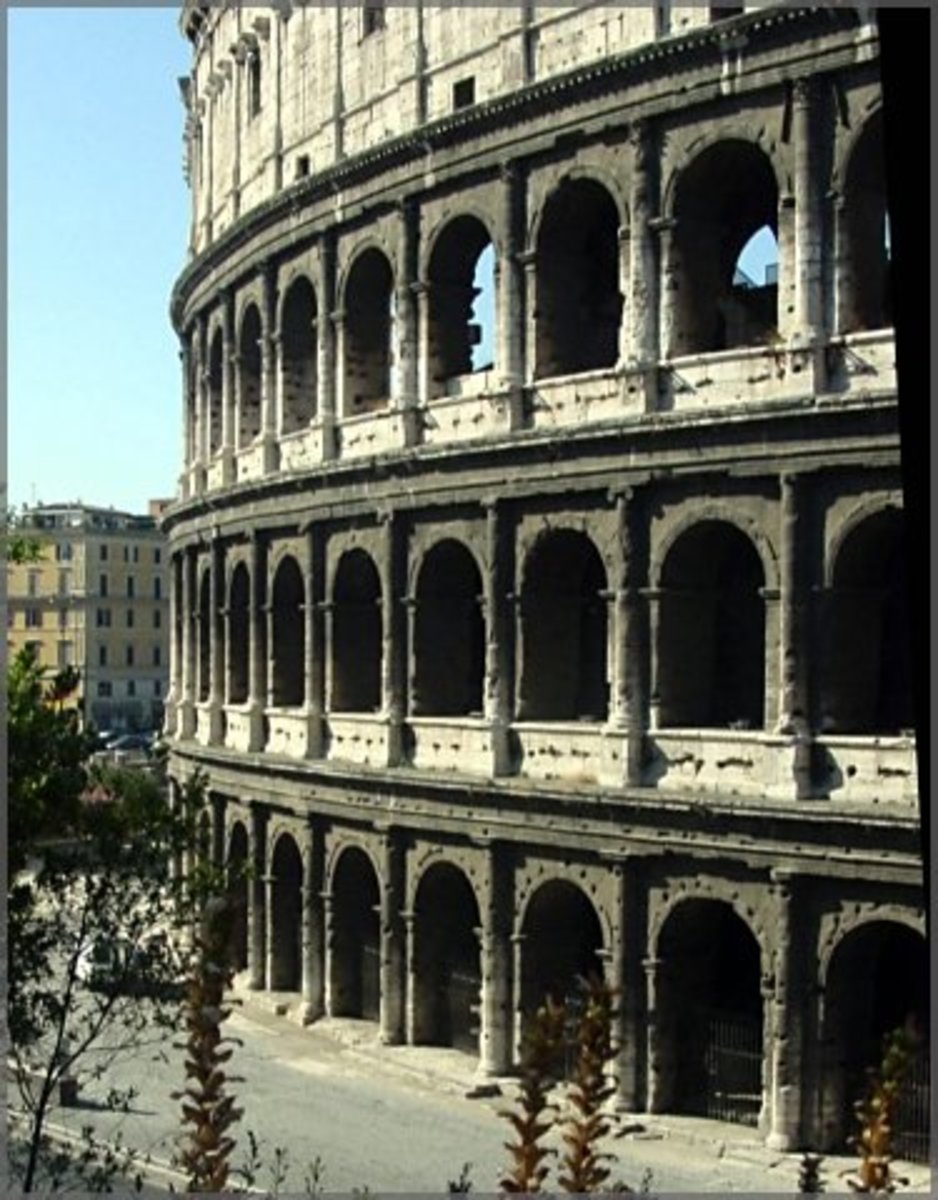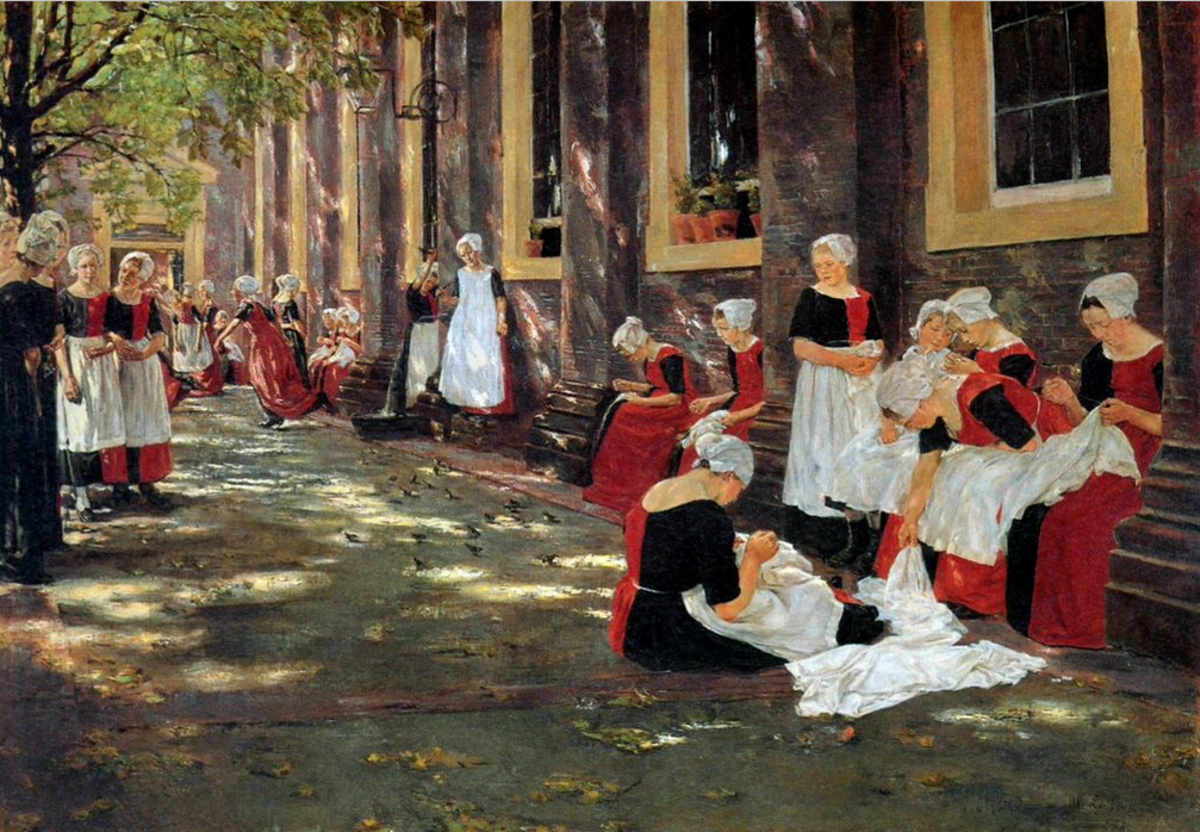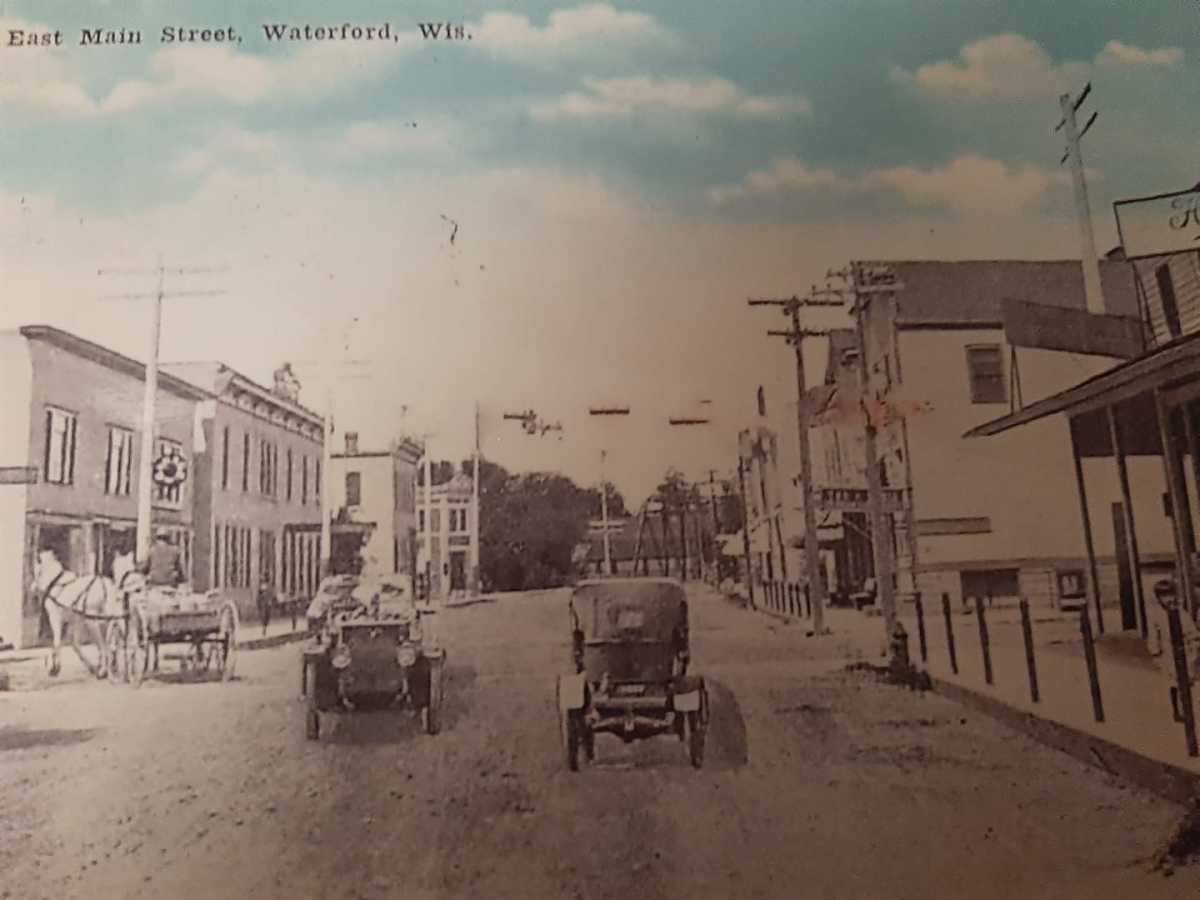The Colosseum in Rome
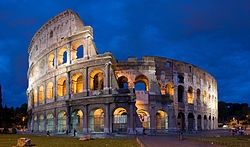
The Roman Colosseum
It's quite amazing that the Roman Colosseum, even 2,000 years after it was built, is still one of the most recognizable of Rome's Classical buildings. Although for centuries the abandoned structure was pillaged for it's building materials, it is still considered an architectural and engineering wonder. Currently, The Roman Colosseum remains as standing proof of both the grandeur and the cruelty of the Roman world.
Wikimedia Creative Commons photo courtesy DAVID ILIFF. License: CC-BY-SA 3.0
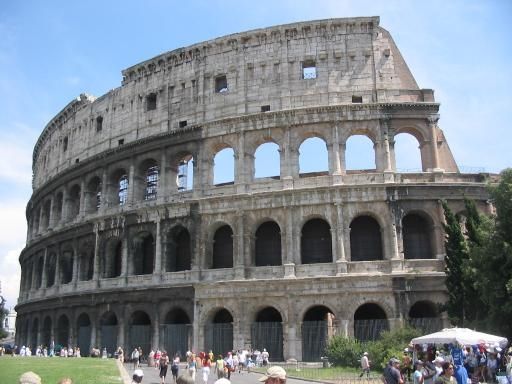
An upclose photo of the Colosseum as it stands today.
Creative Commons photo courtesy Wikimedia/Andreas Ribbefjord
Colosseum Query
Have You Visited the Colosseum?
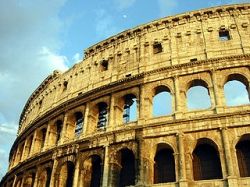
The Colosseum's History
Construction of the Flavian Amphitheater, the original name for the Roman Colosseum, began in 70 A D under the reign of Emperor Vespasian. Following Vespasian's death in 79 A.D. his son Titus finished and inaugurated the Colosseum in 80 A.D. The lavish grand opening of the Amphitheater spanned some three months.
Both Emperor Titus and his younger brother, Emperor Domitian, made various improvements to the structure, which included adding a series of underground tunnels to hold slaves and animals. Also added was an upper deck to increase the Colosseum's seating capacity to roughly 65,000.
Lightning caused a fire that inflicted major damage to the Colosseum in 217, those repairs took over twenty years to complete. An earthquake in 443 once again badly damaged the building, and about 80 years after that, the Colosseum was virtually abandoned.
The Colosseum remained largely intact until the great earthquake of 1349, when a massive portion of the south side of the structure collapsed. The Colosseum was never rebuilt, as the large amount of stone in the rubble was used to construct various other building in Rome and the surrounding area.
Since the Catholic Church took possession of the Colosseum in the mid 13th century, the structure has been used chiefly for religious gatherings and ceremonies. The Church has long since declared the Colosseum a sacred site, and gone to great lengths to preserve and fortify the ancient building.
Creative Commons photo courtesy Wikimedia/Jimmy Walker
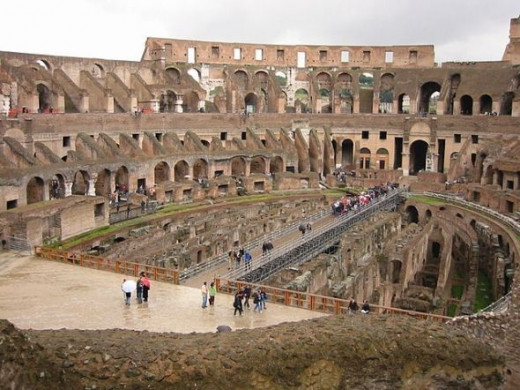
For just under $20, one can visit the interior of the Roman Colosseum.
Public domain photo courtesy Wikimedia/Fubar Obfusco
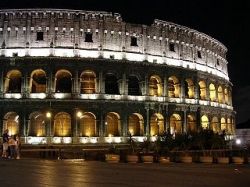
Architecture
As one can imagine, the Colosseum was an architectural marvel in its heyday., as it was the first free-standing amphitheater ever constructed. It employed an elliptical plan with a length 620 feet, a width of 512 feet, and a height of 158 feet. The middle area of the arena is 287 feet long by 180 feet wide. The stone wall encircling the arena and was 15 feet tall
The principle of the arch was widely used in the construction of the Colosseum. The perimeter walls had 80 arched entrances and corridors that funneled the spectators inside. Many of these same principles can be found in today's modern stadiums and arenas.
Seating in the Colosseum was assigned via social class, meaning the better seats (those closer to the central arena), went to the societies' higher ranking people. The Vestal Virgins and the Emperor himself sat in boxes at the middle areas of the stadium, while the senators would sit at the same lower levels at the stadium's ends. Knights and Noblemen were on the next level up, then the citizens, with the wealthier receiving closer seats than the poor.
Creative Commons photo courtesy Flickr/rmceoin
Virtual Tour - Take an historical virtual tour of The Colosseum.
Additional Colosseum Information
- Roman Colosseum
Visit this Roman Colosseum site for interesting history, facts and information about Ancient Rome. The people of the Roman Colosseum - Emperors, Gladiators, Romans, Slaves and Christian Martyrs. - Rome in Pictures
More photos of The Roman Colosseum. - Great Buildings
More history and Colosseum information. - Flavian Amphitheatre/Roman Colosseum
A secret passage was recently uncovered under the Roman Coliseum, elaborately decorated with mosaics and plaster carvings, that was built to let Emperor ... - ItalyGuides.it: The Roman Colosseum, Rome Italy
Virtual Rome: a travel guide of Roman Colosseum including audio guide, pictures, movies, history, and more! The Roman Colosseum (or Coliseum): one of Romes greatest.... - Roman colosseum and the gladiators
Once the famous Roman Colosseum held 50,000 spectators. Today it is a home to stray cats. - The Colosseum.net : The resourceful site on the Colosseum
Chronology · Antiquity · Middle Ages · 1300-1700 · Modern Times · Emperors · Romantic · Roman Money · The Christians & the Colosseum - Ancient Roman Colosseum: History, Architecture, Purpose
Interesting facts about the history, architecture, and purpose of the ancient Roman Colosseum. - Rome Hotels
Stay at the best hotels that Rome has to offer at discounted prices. Tour the Colosseum at discounted package rates.
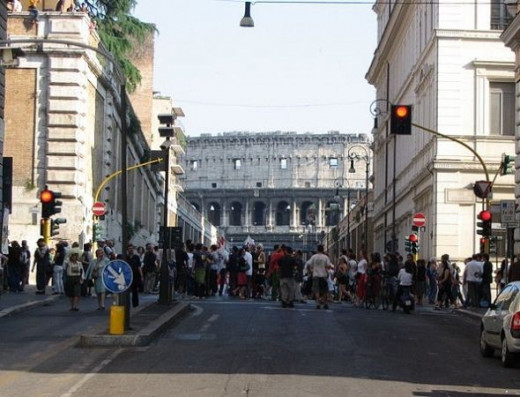
In today's modern Rome, the Colosseum serves as an historic reminder of the Ancient Roman Empire
Creative Commons photo courtesy Wikimedia/Xerxes
This content is accurate and true to the best of the author’s knowledge and is not meant to substitute for formal and individualized advice from a qualified professional.
© 2008 Twmarsh



